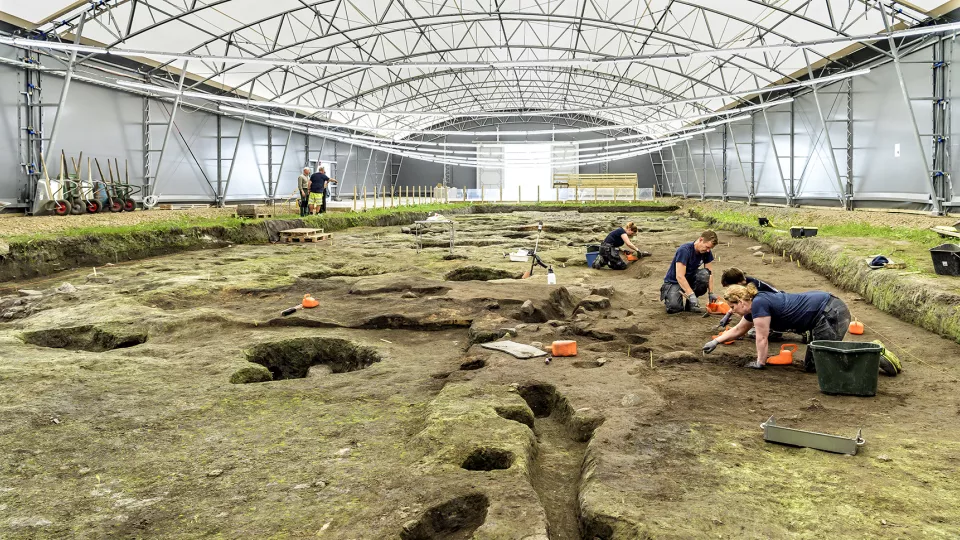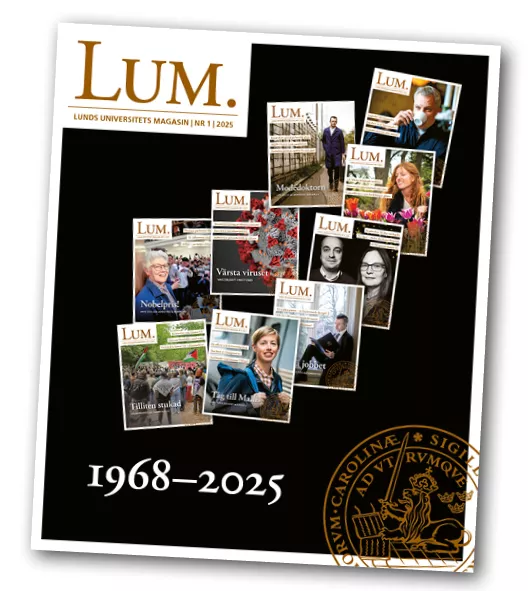A quiet calm rests over Uppåkra, just outside Lund. The only sound under the enormous tent canvas that has been hung just next to an old pigsty – which incidentally is the reason the old iron age settlement was discovered in the first place – is small talk amongst the archaeologists from Lund University. Beyond the tent, the views open up and at the neighbouring church, a funeral is underway.
It has not always been this calm, however.
“In the Iron Age, Uppåkra was a very violent society. During the excavation, we have discovered that there are human remains all over the place here. We have found 900 fragments of human origin. There is a place of sacrifice over there. We found a jaw, and a thighbone showing toothmarks from a dog, which shows that the whole bone has been lying exposed,” says Mats Roslund.
Excavating the Hall on the Hill
He is a professor of Historical Archaeology and one of two project managers for the “Hallen på höjden – dynastiers residens och domän” (The Hall on the hill – residence and domain of dynasties) which is ongoing between 2022 and 2026. The aim is to excavate the hall that for more than 1,000 years was one of the most significant buildings in Iron Age Uppåkra. Alongside the cult house that was previously discovered, the hall that shows that this was a central place where political, military and religious power was gathered.
Mats Roslund is standing in the middle of the excavation, along with Håkan Aspeborg, the archaeologist leading the work on site. It is a large rectangular area, full of holes and recesses from earlier and ongoing digs.
“We are standing in the middle of the holiest part, where far from everyone was allowed to go. There was a long hearth here, with crackling fires. Not something you made porridge on, this was somewhere where warriors met, negotiated and celebrated. It was a gathering place for the very mightiest,” he says.
The stripes show different generations
The walls of the deep excavations look striped.
“Each stripe is an occupation layer, the floor of the building from various generations. Here you can see the light clay floor, and then a dark horizon of an occupation layer deposit – i.e. rubbish that has been left on the floor. They were not all that keen on cleaning,” Håkan Aspeborg laughs.
More than 28 000 objects found
Over the years, over 28,000 objects have been dug up in Uppåkra, everything from suit buckles and glass beads to ceramic shards and what are known as guldgubbers. Other finds show that the residents of Uppåkra had advanced brewing methods and ate a lot of fish. Despite the many finds, and the fact that Uppåkra was discovered back in 1934, when that pigsty was being built, only 0.2% of the 40-hectare site has been excavated.
“That is because it costs so much.” The occupation layers are very thick and digging through them is very expensive. What we are currently undertaking is a SEK 50 million project,” says Mats Roslund.
A large part of the research team’s efforts is spent on documenting their finds. Archaeologist Andrea Borgius has just found a little piece of glass, probably from a Roman beaker.
“It is slightly curved, and it has a pattern of etched ovals. This is really exciting, because it isn’t that often we unearth finds like this,” she says.
DNA technology reveals details
Along with the artefacts, the earth itself is the main focus. With the help of ultramodern DNA technology, we hope to recover details that have previously been impossible to discern.
“It is a completely new method. By using it, it has been possible through a water test alone to determine what fish lived in a particular water-rich environment. The question is whether it is also possible to recover human DNA from the soil,” says Mats Roslund.
If that succeeds, researchers’ knowledge of the people of Uppåkra would be significantly improved.
“We would then be able to recover DNA from the woman who was sitting drinking beer at the winter party in the year 420 and spat on the floor. Of course that is mind-blowing.”
They also hope to find out how and why all those human bones have ended up on the ground.
“One hypothesis is that it is was a way of treating the dead with dignity. But it might also be the case that these people were sacrificed,” says Mats Roslund.







